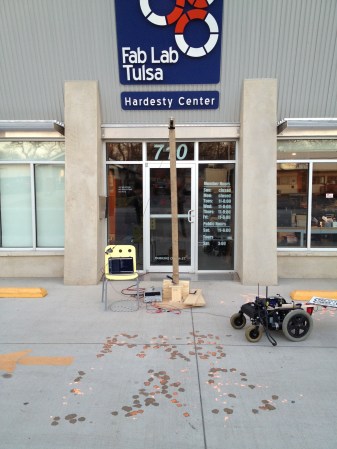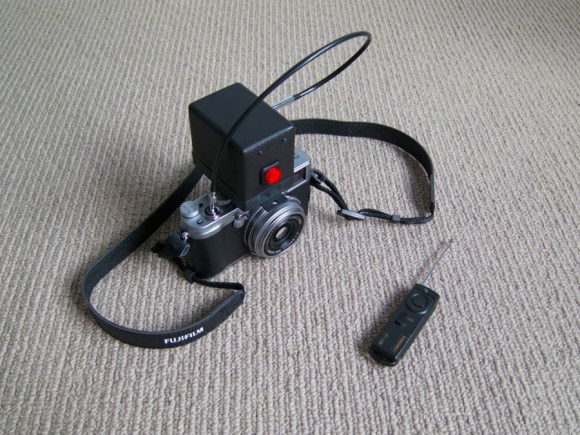For the Deconstruction decentralized hackathon, “The FABricators” from Fab Lab Tulsa built a Street Art Bot. The robot drives around and dispenses liquid chalk in a pattern to make sidewalk art.
The FABricators’ robot is based on an electric wheelchair platform. Attached to the base is the hardware for dispensing chalk, which is controlled over wifi. The operator drives the robot around the area to chalk, and chalk is deposited in the right pattern.
In order to ensure the art is chalked correctly, the robot’s software needs to know where the robot is at all times. This is done using a camera mounted above the area and a fiduciary marker that localizes the robot. The tracking is done using the reacTIVision library.
The robot was built to be expandable, and in the future they want to add multiple colors, or even multiple robots printing simultaneously. After the break, check out a video overview of the project.















